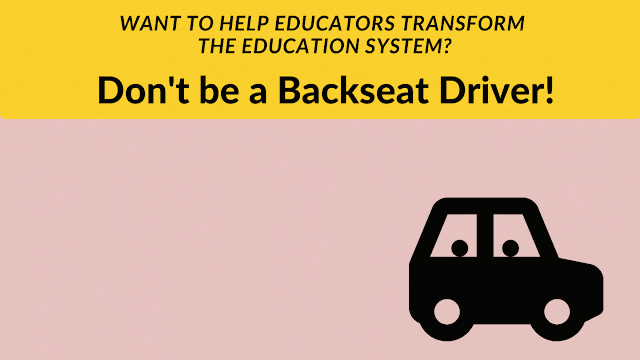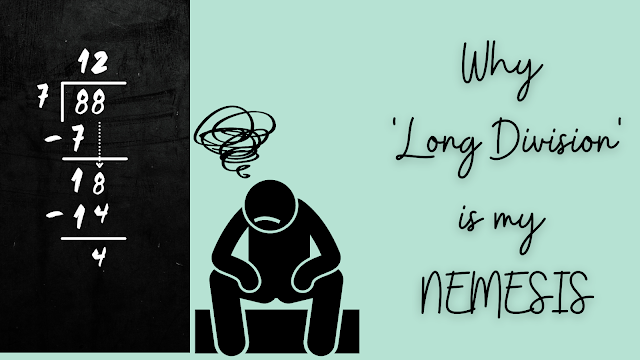4 Socio-Emotional Learning Classroom Tools that Leaders can use with their teams too.
The Idea: Socio-emotional skills are essential for school leadership. This post offers 4 practical SEL tools for leaders to develop and apply these skills in their teams.
I work with about 35 school leaders in our organization - some very experienced, but also many of them new, just figuring out how to navigate the many new opportunities and challenges presented by a leadership role. These leaders support and mentor 250 teachers across our schools. For the last 4 years, one of my key responsibilities as a leader has been to support these school leaders in succeeding in their different roles.School Leadership needs Socio-Emotional Intelligence
During this time, I discovered that being an excellent teacher doesn’t always translate into being a successful school leader. And on further investigation, I realized that when it didn’t translate, usually the missing piece was the lack of a strong socio-emotional skill set. This skill set includes self-awareness, social awareness/ empathy, emotional management and interpersonal relationship skills.
I am reminded of the amazing teacher that struggled to be a leader because she set such high standards for excellence for herself but failed to realize she was burning her less experienced team with the pressure and the inability to be flexible when circumstances called for it.
I am reminded of the brilliant teacher who was unable to transfer his great ideas and expertise to his team because of his tendency to shy away from difficult conversations and his inability to navigate interpersonal relationships.
On the flip side, the leaders that thrived almost immediately in their new roles were the ones who had a combination of competence in teaching along with strong socio-emotional skills.
Turns out this has been pretty obvious in the research around leadership for years.
This review on School leadership from 2019 lists (a) good internal/ external relations and communication and (b) Shaping culture, climate, especially trust and collaboration (c) Providing feedback and recognition as three of the 5 key characteristics of effective school leadership (The others two are a focus on instruction, setting direction i.e. vision and mission). These characteristics all need socio-emotional intelligence.
And this isn’t just limited to school leadership but leadership in general. This article from Harvard Business Review tracks and explains the increasing importance given to social skills for top C-Suite Leaders in companies.
Developing Socio-Emotional skills for Leadership
Building SEL skills in individuals is tricky because some of it can be done by sharing theory and knowledge around it explicitly, but a lot of the learning is situational. Situational learning occurs in dynamic and unpredictable environments, where individuals must adapt, problem-solve, and make decisions based on the specific context they are facing. This adds a layer of complexity to learning.
- Supporting Leaders in enduring ways that empower them
If a team member comes to me with a problem and I solve it for them, the problem is solved in the moment but a great opportunity is lost. I have lost an opportunity for them to use a learning experience to empower them to be problem solvers. It is important to use all of these moments to help leaders develop capacity in an enduring way. It should empower them to solve a similar problem independently the next time.
- Supporting Leaders with practical skills that can be applied quickly
When you are a leader, building socio-emotional Skills on the job is important and can be costly. You are not just developing your interpersonal relationships but also supporting positive relationships in your team. So learning has to be quick and easily applied.
An SEL toolkit as a leader resource for practical and enduring learning
Below are 4 tools / SEL thinking frames that I have used myself or shared with leaders to help guide important conversations with their teams. They are practical and can serve as a great guide initially to structure important and sometimes difficult decisions.
1. Building a positive culture around Feedback:
Why it’s useful: Gives users a structure for providing feedback in a way that is most effective - delivered respectfully and encourages receptivity
How to use it: Use it as guidelines to deliver feedback to team members
Adapted from: David Perkins and John Wiley @ Harvard Project Zero See Here
Why it's useful: Helps users focus solutions to problems (instead of unproductive dialogue) and evaluate if they are win-win solutions
How to use it: Use the RRRH framework to focus the conversation on finding solutions. Use the RRRH - Related, respectful, reasonable and helpful to check that they are sensible, respectful, feasible and helpful, not harmful to everyone.
Adapted from: Positive Discipline in the Classroom - By Dr. Jane Nelson See Here
Tool: RRRH for Win-Win solutions2. Promoting a positive problem solving mindset:
Why it's useful: Helps users focus solutions to problems (instead of unproductive dialogue) and evaluate if they are win-win solutions
How to use it: Use the RRRH framework to focus the conversation on finding solutions. Use the RRRH - Related, respectful, reasonable and helpful to check that they are sensible, respectful, feasible and helpful, not harmful to everyone.
Adapted from: Positive Discipline in the Classroom - By Dr. Jane Nelson See Here
3. Helping positive recovery from mistakes:
Tool: 4 R’s to Recover from a mistake
Why it’s useful: It helps teams/ individuals process and resolve a mistake constructively (with a learning mindset and without shame)
How to use it: Use the 4Rs - Recognize mistakes, (take) Responsibility, Reconcile, Resolve to enable individuals or teams recover from a set-back in a healthy and constructive way
Adapted from: Positive Discipline in the Classroom - By Dr. Jane Nelson See Here
4. Guiding difficult conversations:
Tool: Left hand column-case
Why it is useful: Helps both parties gain a better perspective on an issue by listening to/sharing unspoken thoughts, feelings related to the issue
How to use it: Use this tool to guide difficult conversations between two individuals/ teams and promote more empathetic, informed reflection and action.
Adapted from: MITx Teaching Systems Lab by Dr. Peter Senge See Here
Adapted from: MITx Teaching Systems Lab by Dr. Peter Senge See Here
I have used all of these myself, recommended them to team members or added them as a guiding tool in organizational practices. For example, I have used the left-hand column case to facilitate a discussion between two collaborating leaders when one of them felt like the other may have been overstepping her role and taking away autonomy. We use the ‘ladder of feedback’ in our organization to structure leader and peer feedback after classroom observations.
Educators develop learners with socio-emotional intelligence for a living. I believe it may be a good idea to leverage all the amazing educational tools at our fingertips for the continual development of our teachers and leaders.
.png)







Comments
Post a Comment